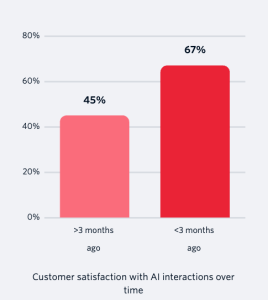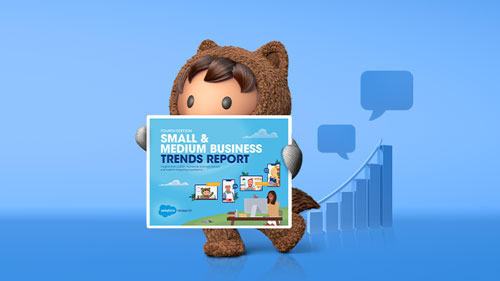
Despite the significant investment poured into martech, most organizations still operate at a basic level, sending batch-and-blast emails and running simple A/B tests. New McKinsey research adds more evidence about the state of martech maturity and shows the same issues persist.
Despite the market ballooning to $131 billion in 2023 and projected to hit $215 billion by 2027, 65% of organizations still self-identify as developing or operational in their martech capabilities. When researchers dug deeper through interviews, the number worsened — many of those claiming operational maturity lacked the core enablers needed for true transformation.
The promise of martech platforms has always been revolutionary: real-time personalization, automated workflows, unprecedented customer visibility and exponential business growth. In reality, most marketing teams are automating yesterday’s processes with tomorrow’s tools, struggling to measure ROI and treating martech as an expensive support function rather than a growth engine.
What makes this moment different is that AI isn’t just another tool to add to the stack, but a reset button that could finally unlock everything the first generation of martech promised — if we can learn from the mistakes that got us here.
4 fault lines crippling martech today — and how marketers can help
The research identified four fundamental challenges that explain why martech hasn’t delivered on its potential. These aren’t technology problems but organizational and strategic failures that AI alone won’t fix — and no technology can fix on its own.
1. Executive sponsorship that exists only on paper
Martech lives in organizational no-man’s land, with little genuine C-suite ownership or cross-functional accountability. This leads to:
- Implementations that happen in isolation.
- Narrow use cases that never scale.
- Tools that support existing processes instead of transforming them.
True C-suite sponsorship means embedding martech into enterprise strategy with clear governance, integration into core processes and shared ownership across IT, finance and marketing. Without this, even the most sophisticated tools remain underused and disconnected from business strategy.
The research revealed an added complexity. Marketing roles turn over more frequently than other senior positions and new customer-facing roles keep emerging — chief digital officers, chief commercial officers, chief data officers.
One automobile company CMO captured the confusion: “Very few companies in our industry have figured out how to clearly delineate the responsibilities of marketing, ownership of the customer journey and digital efforts.”
How marketers can drive change:
- Start by becoming the bridge between technology capabilities and business outcomes.
- Create periodic martech impact reports that directly connect your technology investments to revenue metrics, CLV and acquisition costs.
- Present these to C-suite leaders using their language — ROI, competitive advantage and brand share of voice growth.
- Position yourself as the strategic owner of customer data and journey orchestration, not just campaign execution.
- Collaborate with IT, operations and finance to build a shared understanding of martech’s impact.
2. Complexity that crushes customer connection
Most Fortune 500 organizations have every tool they could want — email platforms with personalization, journey optimization tools, customer decisioning platforms and separate measurement systems. The survey found that 47% of decision-makers cite stack complexity and integration challenges as key blockers preventing value realization.
This is strategic failure disguised as operational inefficiency. Fragmented systems block the creation of unified identity strategies, leaving marketers unable to build the dynamic customer graphs that fuel personalized engagement. Instead of rationalizing legacy systems, organizations tend to layer on more software. Tool replacement efforts get deprioritized because of perceived costs, migration complexity and the cross-functional coordination required.
Organizations add technology but fail to enable marketers to use new functionality, which leads to automating old processes rather than developing new customer communication methods.
How marketers can drive change:
- Become the champion of customer data unification within your organization.
- Audit your current customer data touchpoints — first-party data from website interactions, email engagement, purchase history and customer service interactions.
- Map how this data flows, or doesn’t flow, between systems.
- Build a business case for data integration based on the personalization opportunities you’re missing.
- Focus on one high-value customer segment and demonstrate how unified data can improve a specific business metric over time. Start small with a proof-of-concept project first.
3. Measurement that misses the point
Not one of the more than 50 senior marketing leaders interviewed at Fortune 500 companies could clearly articulate the ROI of their martech investments or show how their stack drives measurable incremental value.
Instead of connecting outcomes to revenue growth, customer LTV or strategic business goals, marketing teams track operational metrics — email sends, open rates, campaign delivery, impressions and reach. This creates a vicious cycle where martech leaders see their work dismissed as a cost of doing business rather than recognized as a growth engine.
The result is that martech is treated as a one-time purchase instead of an evolving enterprise capability that requires alignment, enablement and sustained executive sponsorship.
How marketers can drive change:
- Implement a three-tier measurement framework that connects tactical metrics to strategic outcomes.
- Track operational efficiency — time saved through automation and cost per lead reduction — alongside customer experience improvements such as faster response times and higher satisfaction scores.
- Add revenue impact metrics, including attribution modeling and CLV increases.
- Create quarterly martech ROI dashboards that display the total cost of ownership against the incremental revenue generated. This positions you as a strategic business partner, not just a campaign executor.
4. Technology outpacing talent
The pace of martech advancement has far exceeded the capability development of marketers. The research found that 34% of buyers and decision-makers cite under-skilled talent as a key hurdle to realizing technology value.
This isn’t about hiring more people but about fundamental capability gaps in strategy, implementation and optimization. Martech is only valuable when organizations have the right talent and capabilities to use it effectively. Closing this gap through robust onboarding and ongoing training is critical for success.
How marketers can drive change:
- Develop core competencies in customer data strategy, marketing automation workflows and AI integration.
- Master your existing tools — most marketers utilize only 30% of their platform’s capabilities.
- Create internal lunch-and-learn sessions where team members share advanced use cases and optimization strategies.
- Build partnerships with your martech vendors for ongoing training and certification.
- Position yourself as the internal expert who can bridge technology capabilities with marketing strategy.
The AI opportunity: Your strategic reset framework
AI presents a rare second chance to generate significant value from martech. But capturing this opportunity requires more than adding AI features to existing tools. It demands a fundamental reimagining of martech strategy, focused on both simplification and innovation.
Building your customer data strategy as a marketing moat
Instead of treating martech as disconnected platforms, successful marketers are positioning customer data strategy as their sustainable competitive advantage. First-party data can become an actual moat — creating a defensible competitive position that’s difficult for competitors to replicate.
Unlike third-party data that competitors can purchase, first-party data provides unique insights into your customers that only you possess. This data becomes increasingly valuable over time as you collect more interactions and build more comprehensive customer profiles.
Here’s your implementation framework:
- Collection: Audit every customer touchpoint to identify opportunities for data collection. Focus on value exchange — what additional information can customers provide in return for better experiences?
- Unification: Check whether your stack has a platform or data warehouse that can create unified customer profiles across all touchpoints and channels.
- Activation: Use unified profiles to power personalized experiences, predictive analytics and automated customer journeys.
- Governance: Establish clear policies for data quality, privacy compliance and access controls.
Developing core martech competencies
The research shows that technological advancements have outpaced marketer capability development. These are the essential competencies marketers need:
- Customer journey orchestration: Understanding how to design and implement automated customer journeys that respond to behavioral triggers and lifecycle stages.
- Marketing measurement and analytics: Ability to connect marketing activities to business outcomes using incrementality testing.
- AI integration and optimization: Understanding how to use AI for content generation, predictive analytics and automated decision-making while maintaining human oversight and strategic direction.
- Cross-functional collaboration: Skills to work effectively with data science, IT and product teams to implement integrated customer experiences.
Building the marketers of tomorrow
Technology alone doesn’t create impact. Real value emerges when marketers have the skills and confidence to use it effectively. Solving the capability gap means treating martech skill development as a continuous journey rather than a one-time event.
Organizations should invest in robust onboarding for new tools, supported by ongoing, modular learning that evolves in tandem with platform updates. AI can serve as a capability enabler by acting as a copilot — intelligent agents guide marketers in real time, automate repetitive tasks and provide actionable insights, lowering technical barriers while amplifying creativity and strategic focus.
Combined with strong change management and leadership incentives, this approach enables marketers to embrace new functionality, unlock the full potential of their stack and deliver adaptive AI-driven customer experiences.
Why this time could be different
The AI era gives organizations a chance to redefine martech’s impact around revenue generation, operational efficiency and total cost of ownership. It can bring brands closer to customers and enable true personalization.
This is marketing’s second chance to deliver on the promise of martech. The organizations that recognize this moment aren’t about tinkering at the margins but about redesigning processes from the ground up — and building new capabilities that bring human creativity and machine intelligence together — will emerge as the next generation of marketing leaders.
The post Why your martech still feels like a cost center — and how AI changes that appeared first on MarTech.




















